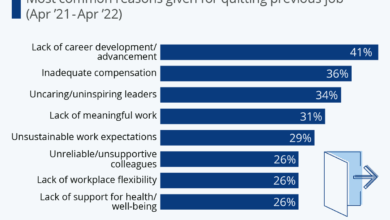Recognize early warning signs of mania quickly

Have you ever felt amazing? Like you could conquer the world, sleep wasn’t necessary, and ideas were just flowing? While feeling good is wonderful, sometimes that feeling can be a sign of something more complex. It’s easy to dismiss intense energy or a period of high creativity as simply being “on top of the world,” but for individuals with bipolar disorder, these experiences can be early indicators of a manic episode. Understanding these early warning signs isn’t about self-diagnosis; it’s about recognizing changes in yourself or loved ones that might warrant a conversation with a healthcare professional. It’s about being informed and proactive about mental health. This article will walk you through the subtle shifts that can signal the onset of mania, helping you understand what to look for and how to respond. We’ll cover everything from changes in sleep and mood to behavioral patterns and thought processes, all in a way that’s easy to understand and relate to. Knowing these signs can make a real difference in managing bipolar disorder and maintaining overall well-being.
Key Takeaways
- Mania isn’t just feeling happy; it’s a distinct period of abnormally elevated or irritable mood.
- Early signs can be subtle, including decreased need for sleep, racing thoughts, and increased energy.
- Recognizing these signs allows for earlier intervention and potentially milder episodes.
- Changes in behavior, like impulsive spending or risky activities, are red flags.
- It’s crucial to differentiate between normal fluctuations in mood and symptoms of mania.
- Seeking professional help is essential for accurate diagnosis and treatment of bipolar disorder.
- Support systems play a vital role in recognizing and responding to changes in mood and behavior.
What is Mania, Exactly?
Mania is more than just being really happy. It’s a period of unusually elevated, expansive, or irritable mood, accompanied by increased energy and activity. Think of it as a shift in gears – a significant departure from a person’s typical baseline. While some people experience mania as a euphoric high, others feel intensely irritable and agitated. It’s a core symptom of bipolar disorder, but it can also occur in other mental health conditions. The duration of a manic episode is also important; it typically lasts at least a week, though even shorter periods of elevated mood can be concerning if they represent a clear change from the norm. Understanding the difference between a good mood and mania is key, and that’s where recognizing the early warning signs comes in.
The Subtle Creep: Early Warning Signs
The initial stages of mania often aren’t dramatic. They creep in gradually, making them easy to miss or dismiss. These early signs are often the most crucial to identify, as intervention at this stage can sometimes prevent a full-blown manic episode. One of the first things people often notice is a decreased need for sleep. They might feel rested after only a few hours, or not feel tired at all. This isn’t feeling energetic despite being tired; it’s genuinely not needing as much sleep. Another common sign is racing thoughts – a feeling that thoughts are speeding through the mind, jumping from one idea to another. This can make it difficult to concentrate or follow a conversation. Increased talkativeness is also typical; people experiencing early mania often talk more quickly and more than usual, dominating conversations.
Changes in Mood and Energy Levels
Beyond the initial subtle shifts, more noticeable changes in mood and energy levels begin to emerge. While euphoria is possible, irritability is a very common presentation of mania, especially in what’s known as mixed features. This means someone might experience both elevated mood and increased irritability simultaneously. Energy levels skyrocket, leading to increased activity and restlessness. People might start multiple projects at once, but struggle to finish any of them. They might feel incredibly productive, but their efforts are often scattered and unfocused. This heightened energy can also manifest as physical restlessness – pacing, fidgeting, or an inability to sit still. Recognizing these changes in mood and energy is vital for early detection of bipolar disorder symptoms.
Behavioral Changes to Watch For
The behavioral changes associated with early mania can be particularly concerning. Impulsive behavior is a hallmark sign. This might include impulsive spending, engaging in risky sexual behavior, or making rash decisions without considering the consequences. Increased goal-directed activity is also common, but these goals are often unrealistic or grandiose. Someone might suddenly decide they’re going to start a business, write a novel, or travel the world, without a concrete plan or the necessary resources. Socially, people experiencing early mania might become more outgoing and charismatic, but their interactions can also be inappropriate or overly familiar. They might dominate conversations, interrupt others, or engage in behaviors that are out of character.
The Role of Racing Thoughts and Distractibility
Racing thoughts aren’t just about thinking quickly; they’re about a feeling of being overwhelmed by a constant stream of ideas. It’s like having a radio tuned to multiple stations at once. This can lead to significant distractibility – an inability to focus on one task or conversation. People might start a sentence but trail off, get sidetracked by a new thought, or jump from topic to topic without a clear connection. This distractibility can interfere with daily functioning, making it difficult to work, study, or even carry on a simple conversation. It’s a key indicator that something is shifting and warrants attention, especially in someone with a history of bipolar disorder.
Recognizing Grandiose Ideas and Delusions
As mania progresses, thoughts can become increasingly grandiose and unrealistic. People might develop inflated self-esteem, believing they have special talents, abilities, or importance. They might believe they have a direct line to a higher power, or that they’re destined for greatness. In more severe cases, these grandiose ideas can escalate into delusions – fixed, false beliefs that are not based in reality. These delusions can be bizarre and unsettling, and they require immediate medical attention. It’s important to remember that delusions are a symptom of a mental health condition, not a reflection of someone’s character.
How Mania Differs from Hypomania
Hypomania is a less severe form of mania. The symptoms are similar, but they’re less intense and don’t cause significant impairment in daily functioning. While hypomania can be productive and even enjoyable, it can still be a precursor to a full-blown manic episode. The key difference is the level of disruption. Hypomania might involve increased energy and creativity, but it doesn’t typically involve the impulsive behavior, grandiose ideas, or delusions seen in mania. Recognizing the distinction between hypomania and mania is important for tailoring treatment and preventing escalation. Many people with bipolar disorder experience hypomanic episodes.
The Impact on Relationships
Mania can significantly strain relationships. The impulsive behavior, irritability, and grandiose ideas associated with mania can be challenging for loved ones to understand and cope with. Communication can break down, and conflicts can arise. Family and friends might feel confused, frustrated, or even scared. It’s important for loved ones to approach the situation with empathy and understanding, and to encourage the person experiencing mania to seek professional help. Support groups for families of people with bipolar disorder can provide valuable resources and support.
What to Do If You Recognize These Signs
If you recognize these signs in yourself or someone you care about, it’s crucial to take action. The first step is to consult with a healthcare professional – a psychiatrist, psychologist, or primary care physician. They can conduct a thorough evaluation to determine if the symptoms are related to bipolar disorder or another condition. If a diagnosis is made, they can develop a treatment plan that may include medication, therapy, and lifestyle changes. Don’t hesitate to reach out for help. Early intervention can significantly improve outcomes.
The Importance of Professional Diagnosis
Self-diagnosis can be dangerous. Many conditions share similar symptoms, and it’s important to get an accurate diagnosis from a qualified healthcare professional. A proper diagnosis will also help determine the best course of treatment. Treatment for bipolar disorder typically involves a combination of medication and therapy. Mood stabilizers and antipsychotics can help regulate mood, while therapy can provide coping skills and support.
Treatment Options for Mania
Treatment for mania aims to stabilize mood and reduce symptoms. Medication is often the first line of defense, with mood stabilizers and antipsychotics being the most commonly prescribed drugs. Therapy, such as cognitive behavioral therapy (CBT), can help individuals identify triggers, develop coping mechanisms, and manage their symptoms. In severe cases, hospitalization may be necessary to ensure safety and provide intensive treatment. Lifestyle changes, such as maintaining a regular sleep schedule, avoiding alcohol and drugs, and managing stress, can also play a significant role in managing bipolar disorder.
Building a Support System
Having a strong support system is essential for managing bipolar disorder. This includes family, friends, and support groups. Sharing your experiences with others who understand can be incredibly validating and empowering. Support groups provide a safe space to connect with others, learn coping strategies, and receive encouragement. Don’t be afraid to lean on your support system for help when you need it.
Preventing Relapse: Long-Term Management
Managing bipolar disorder is a lifelong process. Preventing relapse requires ongoing commitment to treatment and self-care. This includes taking medication as prescribed, attending therapy sessions, maintaining a healthy lifestyle, and recognizing early warning signs of mood changes. Developing a relapse prevention plan with your healthcare provider can help you stay on track and manage your condition effectively.
FAQs
Q: Is mania always a sign of bipolar disorder?
A: While mania is a core symptom of bipolar disorder, it can sometimes occur in other conditions, such as schizoaffective disorder or as a result of certain medical conditions or substance use. A professional diagnosis is crucial.
Q: Can someone with bipolar disorder function normally during a manic episode?
A: It depends on the severity of the episode. Some people can maintain a semblance of normalcy, especially in the early stages, but as mania progresses, it typically causes significant impairment in daily functioning.
Q: What should I do if someone I know is experiencing a manic episode and is refusing help?
A: This is a difficult situation. You can try to express your concerns calmly and empathetically, and encourage them to seek professional help. If they pose a danger to themselves or others, you may need to contact emergency services.
Q: Are there any lifestyle changes that can help manage bipolar disorder?
A: Yes! Maintaining a regular sleep schedule, eating a healthy diet, exercising regularly, managing stress, and avoiding alcohol and drugs can all help stabilize mood and reduce symptoms.
Q: How long does mania typically last?
A: A manic episode typically lasts at least a week, but it can vary in duration. The length and severity of the episode can also depend on whether the person is receiving treatment.
We hope this article has provided you with a better understanding of the early warning signs of mania. Remember, recognizing these signs is the first step towards getting help and managing bipolar disorder effectively. If you or someone you know is struggling, please reach out to a healthcare professional. You are not alone, and help is available. Please share this information with anyone who might find it helpful, and let’s continue to raise awareness about mental health.
Hi, I’m Sophia! Welcome to my blog Try Stress Management (trystressmanagement.com), where I share simple, down-to-earth ways to handle stress and bring more calm into everyday life. Think of me as your friendly guide, offering practical tips, reflections, and little reminders that we’re all figuring this out together.
When I’m not blogging, you’ll usually find me with a good book, sipping tea, or exploring new walking trails. I believe small changes can make a big difference—and that a calmer, happier life is possible for everyone.



